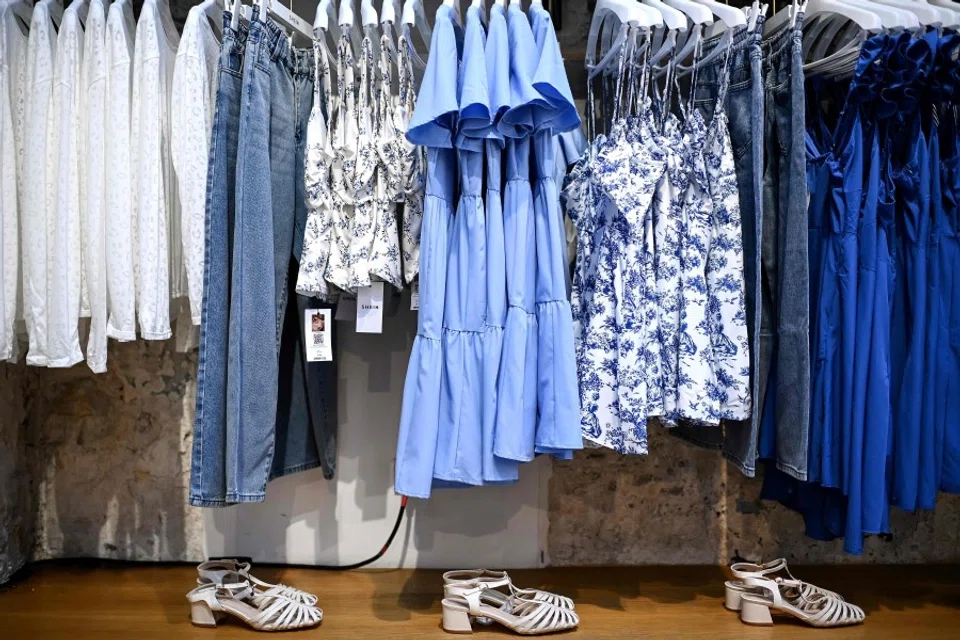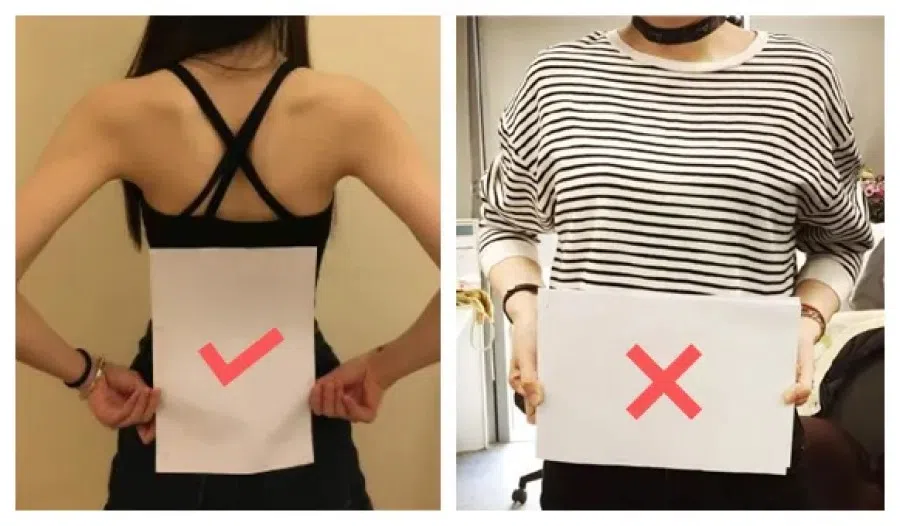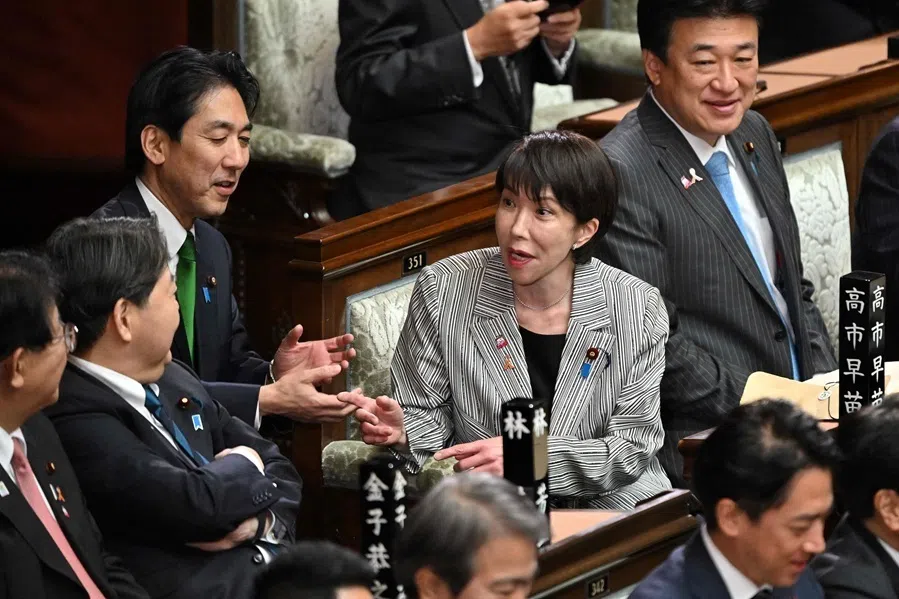Why Chinese women's clothing are getting smaller
Are women in China getting more conscious about their body image? Or is the clothing industry part of the problem as it makes smaller-sized clothes that could even fit children? Lianhe Zaobao's China Desk looks into the trend in clothes manufacturing and its impact on Chinese women's body image.

A recent documentary in China featuring a 15-year-old Chinese girl who died weighing less than 25kg after developing anorexia nervosa has sparked fresh discussions on Chinese social media about female body image anxiety.
In the documentary, the girl had starved for nearly 50 days to lose weight - at 165cm, she weighed only 24.8kg. By the time her family took her to the hospital, she was unconscious, severely malnourished, and suffering from respiratory problems. After more than ten days of efforts, she sadly passed away.
Following media reports, the incident quickly became a trending topic on Weibo on 24 May, with Chinese netizens expressing deep sympathy over the loss of a young life.
Just two days later, the media reported on another 22-year-old female student from Hangzhou who began an extreme weight-loss regimen after her boyfriend complained that she was too fat. Her weight drastically dropped from 55kg to 27.5kg and she was diagnosed with anorexia nervosa. Fortunately, the student was able to return to school and start a new life after receiving more than two months of treatment.
Distorted preference for 'fair, young and thin'
Anorexia nervosa is an eating disorder characterised by an abnormally low body weight, an intense fear of gaining weight, and a distorted perception of body weight. Research suggests that among the mental disorders, anorexia nervosa has the highest mortality rate. The above-mentioned cases of extreme weight loss have refocused public attention in China on the issue of body image anxiety among young women.

On 24 May, China Newsweek launched a poll on its official Weibo account: "What exacerbates body image anxiety?" As of 26 May, more than 28,000 out of the 58,000 responses believed that it was due to the aesthetic preference for fair skin, youthful looks and a slim figure. Another 12,000 respondents believed that it was due to the distorted notion that "the world is friendlier towards thin people". These two factors accounted for more than 70% of the responses.
Chen Jue, director of the Clinical Psychology Department and the Eating Disorders Diagnosis and Treatment Center at Shanghai Mental Health Center, said in a media interview that the aesthetic trend of "thin is beautiful" has a profound influence on young people.
...over 8,000 respondents in the China Newsweek poll believed that women's body image anxiety is also caused by "clothing manufacturers making clothes smaller in size".
The constant emergence and spread of weight loss-related topics such as having an "A4 waist" (comparing a person's waist size to the width of a sheet of A4 paper) and "a good woman weighs less than 100 pounds" on social media platforms have led teenagers to imitate and even engage in "extreme body image involution". Chen also revealed that patients with anorexia nervosa have become younger in recent years, with a noticeable increase in those under 13 years old.
The distorted aesthetic preference for "fair, young and thin", which emerged unexpectedly, has been criticised by netizens, but towards uncoordinated targets. Some blame the shackles put on women by an outdated feudal and patriarchal society, while others feel this distorted aesthetic is a result of women themselves lacking self-love and being overly concerned about external validation.

Interestingly, besides the societal aspect of distorted aesthetics and perceptions, over 8,000 respondents in the China Newsweek poll believed that women's body image anxiety is also caused by "clothing manufacturers making clothes smaller in size".
One popular comment in the poll showed an image comparing a medium-sized top for adults and a T-shirt sized for a 110cm-tall child - both appear almost the same size, with the adult top looking even shorter.
Female clothing sizes have been shrinking
Many might be caught off guard by such a comparison. Is it possible that Chinese women have become so inwardly focused on their bodies and are now so skinny that they can wear children's sizes?
It may not be so straightforward. According to China's fifth National Physical Fitness Monitoring Report released in 2022, Chinese women aged 20 to 24 have an average height of 160.6cm, weight of 55.7kg and waist size of 72.8cm. Meanwhile, Chinese women aged 25 to 29 have an average height of 159.8cm, weight of 56.7kg and waist size of 74.4cm. In contrast, young girls of around 110cm in height typically weigh around 20kg, with a chest circumference of just over 50cm, which is not comparable.

However, netizens' experiences shared on social media reveal that it is common for women's clothes to be as small as children's.
A slim female netizen with a height of 163cm and weight of 42kg claimed that she already has problems fitting into a size S dress she bought online. The post received over 12,000 likes and 4,000 comments on Xiaohongshu, an online platform mainly used by young women, with numerous netizens sharing similar experiences. Netizens weighing around 50kg even commented that they basically have to wear clothes in size L or larger.
...the majority of size L clothes are tailored for a bust and waist size up to 90cm and 70cm respectively - the largest size offered by some brands do not even exceed these measurements.
If the plights of ordinary people are still unable to put things in perspective, think about how the public reacted when Chinese actor Zhang Xinyu, who is 169cm tall and weighs 51kg, complained on Weibo that she cannot fit into adult plus-size clothes from a clothing brand. Even an image-conscious female celebrity is caught in the body image involution - the problem must be with the clothing size, not the individual.

Thus, netizens looked into the sizing charts of various e-commerce websites and found that the majority of size L clothes are tailored for a bust and waist size up to 90cm and 70cm respectively - the largest size offered by some brands do not even exceed these measurements. This implies that the clothes of these brands won't even fit the average-sized Chinese women in their twenties.
Other netizens also dug out their old clothes and asserted that while they wore size S in the past, they can no longer fit into today's size L. Furthermore, one netizen compared this year's and the previous year's sizing chart of a brand, and found that the same size shrank by over 10cm within a year.
These scenarios show that female clothing sizes have indeed shrunk and is in fact a common phenomenon. China Women's News (《中国妇女报》), a newspaper under the All-China Women's Federation, published an article on 25 May making the criticism that female clothing sizes are getting smaller, which glorifies the aesthetic of extreme thinness. The article asserted that the choice of clothing should be diversified in the first place, and shrinking them is in fact a silent form of body shaming against women.
Some even speculate that business owners have intentionally made fewer and smaller clothes to save on cost and fabric.

The article also criticised businesses that deliberately sell body anxiety, accusing them of sacrificing the health of customers and blindly catering to distorted aesthetics, but such misleading tactics will ultimately be abandoned by the times and discerning consumers.
Numerous netizens and female internet celebrities have also taken to social media to lambast such businesses and hope that women will not be affected by these outrageous sizes and develop body image anxiety. But in Chinese society where a "fair, young and thin" aesthetic has become the mainstream and where "body image involution" has trickled down to youths, how effective are these criticisms?
Clothing brands scrimping on fabric
Amid the pursuit of the "fair, young and thin" aesthetic, how did women's fashion trends go from the oversized unisex style and boyfriend style a few years ago to the current "hot-girl style" comparable to kids' clothes?
Some people think this trend is led by K-pop girl groups that frequently don daring outfits. Others believe that this is a case where the right to clothing has gone overboard and astray. Some even speculate that business owners have intentionally made fewer and smaller clothes to save on cost and fabric.

This theory seems to make sense too: if clothing manufacturers offered a large size range, they would have to bear higher risks of excess inventory, which small online stores cannot accommodate. Hence, some business owners choose to reduce the size range of the clothes they sell or even sell free-size clothes as small-, medium- or large-size clothes.
Jiemian News (《界面新闻》) quoted an apparel industry professional as saying that the sizes sold by mid- to low-end businesses in the wholesale clothing market will usually be a size smaller so that there will be more excess fabric to produce even more clothes, in turn earning considerable profits. The industry professional believes that it doesn't matter if the average person is unable to fit into the smaller clothes because "when clothes collectively become smaller, most consumers will be convinced that they are not skinny enough".
Some netizens mocked that a century ago, American economists proposed the "hemline index" that suggests that the shorter the skirt, the better the economy; but it is just the opposite when applied to the Chinese market. Amid the economic slowdown, Chinese merchants are producing increasingly smaller women's clothing to save on fabric.
Although the changes in people's perception of clothing, food, housing and transportation are indeed related to the overall economic situation, the aforementioned explanation is still far-fetched. The shrinking of women's clothing is indeed baffling, but what's more befuddling is that this distorted aesthetic of extreme thinness has held society hostage, so much so that the average woman finds it difficult to buy clothes that fit.
This article was first published in Lianhe Zaobao as "穿不下衣服的中国女人".
Related: A personal account of Tangshan's dreadful societal culture | The crux of gender inequality is that men have always objectified women | China's crackdown on pretty boys and temple temptresses: Why are Chinese women feeling targeted? | China's forced drinking culture a submissive test for Chinese women





